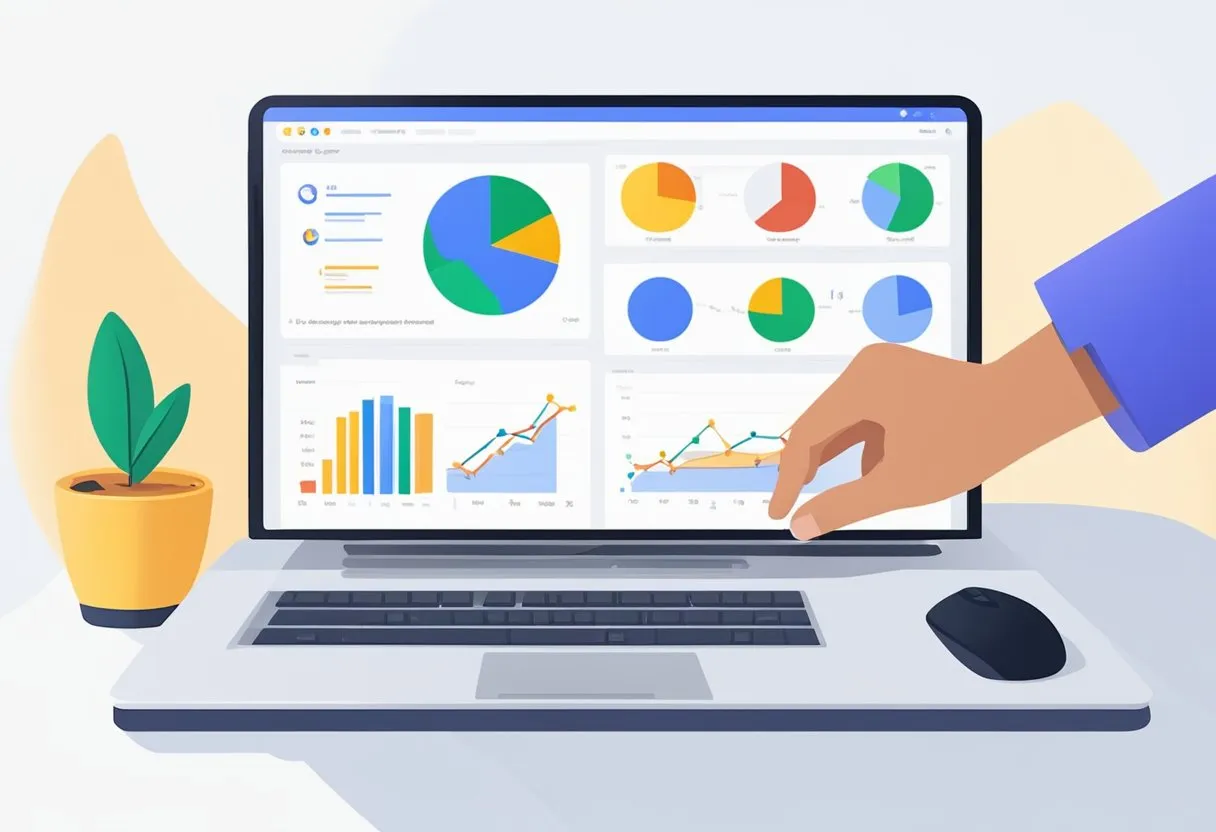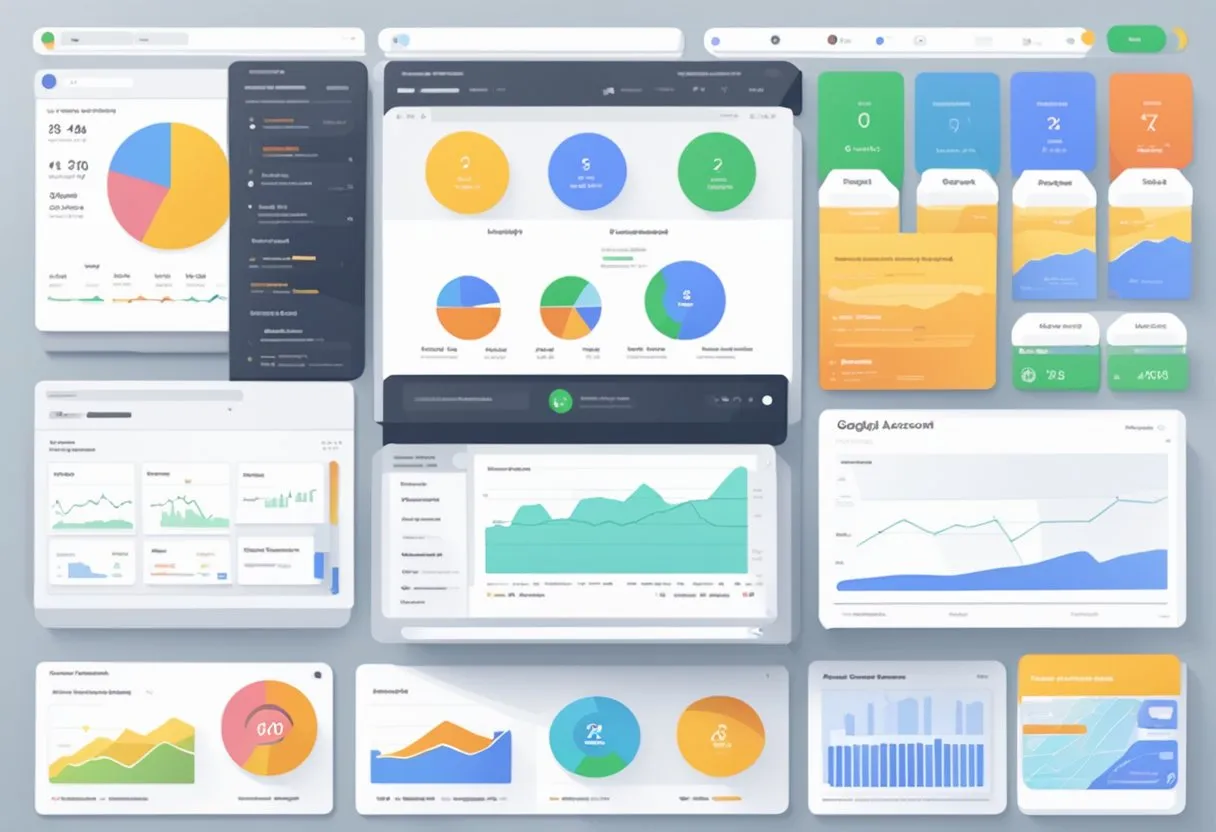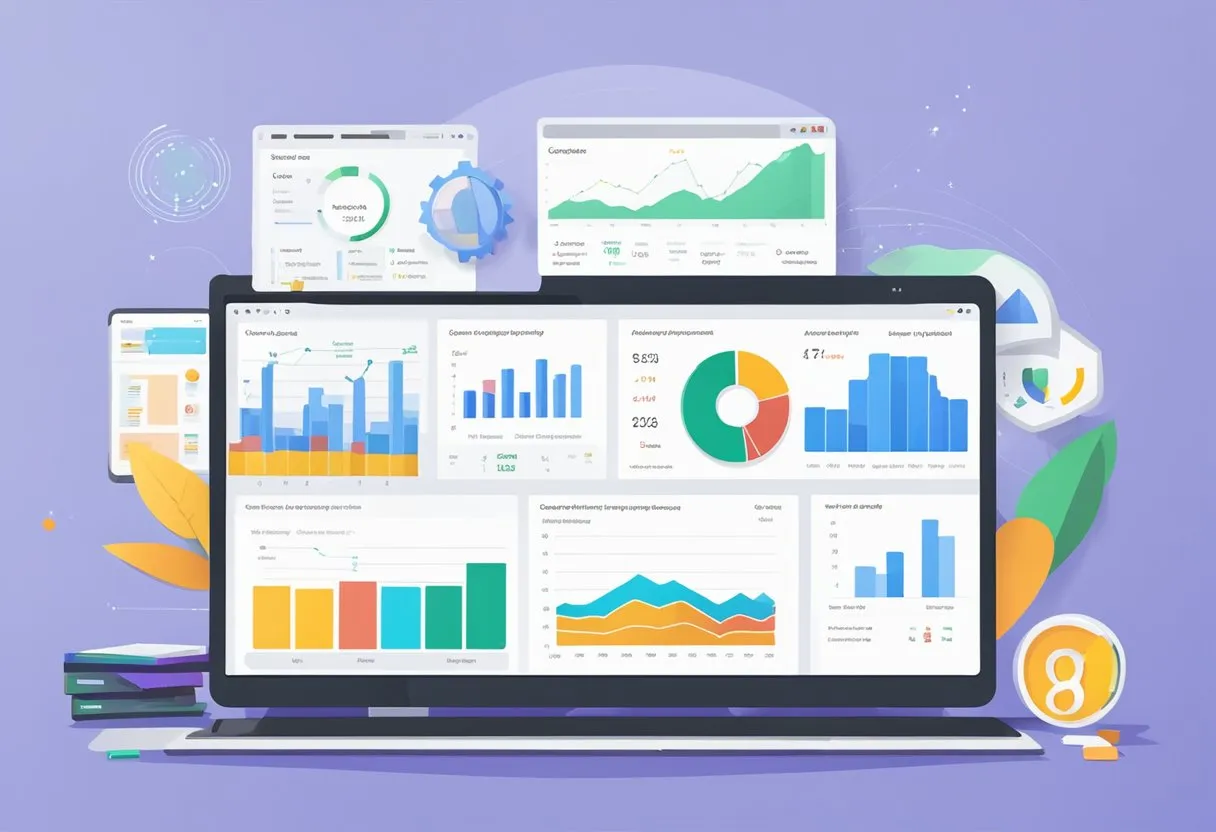Monitoring Google Ads Account Health: Essential Metrics for Optimal Performance
Keeping your Google Ads account healthy is key to getting the most out of your online advertising efforts. Regular monitoring and fine-tuning can make a big difference in your ad performance and return on investment. By tracking key metrics and making data-driven adjustments, you can boost your ads’ effectiveness and reach your marketing goals.

Google Ads offers many tools and reports to help you check your account’s health. You can review important stats like click-through rates, average cost per click, and Quality Scores for your ads and keywords. These numbers give you insights into what’s working well and what needs improvement.
Staying on top of your Google Ads account isn’t a one-time task. It requires ongoing attention and tweaks based on the data you collect. By making this a regular part of your marketing routine, you’ll be better equipped to make smart choices about your ad spend and strategy.
Key Takeaways
- Regular monitoring of key metrics is vital for Google Ads success
- Data-driven adjustments can greatly improve ad performance
- Ongoing account maintenance leads to better marketing decisions
Understanding Google Ads Fundamentals

Google Ads is a powerful platform for online advertising. It uses campaigns, ad groups, and key metrics to help businesses reach their target audience. The Google Ads dashboard is the central hub for managing and tracking ad performance.
The Role of Campaigns and Ad Groups
Campaigns are the top level of organization in Google Ads. They control budget, location targeting, and other settings. Ad groups sit within campaigns and contain related ads and keywords.
Each ad group focuses on a specific theme or product. This structure helps create targeted ads that match user searches. For example, a clothing store might have separate ad groups for shirts, pants, and shoes.
Ad groups also determine when your ads show up in search results. They use keywords to trigger ad displays when people search for related terms.
Key Performance Metrics
Several metrics help measure ad success in Google Ads. Click-through rate (CTR) shows how often people click your ad after seeing it. A higher CTR often means your ad is relevant to viewers.
Cost per click (CPC) is the amount you pay when someone clicks your ad. Lower CPC can help stretch your budget further.
Conversion rate tracks how many clicks turn into desired actions, like sales or sign-ups. A good conversion rate means your ads are bringing in valuable traffic.
Quality Score affects ad placement and cost. It looks at your keyword relevance, landing page experience, and CTR. Higher scores can lead to better ad positions at lower costs.
Navigating the Google Ads Dashboard
The Google Ads dashboard is your control center. It shows campaign performance at a glance. You can view metrics, adjust bids, and update ad content here.
The dashboard has sections for campaigns, ad groups, and keywords. Each area offers detailed data on performance. You can see which ads are doing well and which need work.
Charts and graphs help visualize trends over time. This makes it easier to spot patterns and make informed decisions.
Custom reports let you focus on the metrics that matter most to your business. You can save these reports for quick access in the future.
Optimizing for Performance
Improving Google Ads performance requires a focus on key metrics and strategies. By refining bidding, enhancing quality scores, and boosting click-through rates, advertisers can maximize their campaign effectiveness.
Refining Bidding Strategies
Bidding strategies play a crucial role in Google Ads optimization. Advertisers should choose the right strategy based on their goals. For example, maximize clicks works well for traffic-focused campaigns, while target CPA suits conversion-driven objectives.
Smart bidding uses machine learning to adjust bids in real-time. This helps improve campaign performance by considering many signals like device, location, and time of day.
Regular bid adjustments are key. Increase bids for high-performing keywords and decrease them for underperformers. This helps control costs while maximizing results.
Monitor your cost per click (CPC) closely. If it’s too high, try expanding your keyword list or improving ad relevance to lower costs.
Enhancing Quality Score
Quality Score greatly impacts ad performance and costs. Higher scores lead to better ad positions and lower CPCs.
To boost Quality Score:
- Create relevant, keyword-rich ad copy
- Improve landing page experience
- Use ad extensions to provide more information
- Organize keywords into tight, themed ad groups
Google Ads reports offer insights into Quality Score components. Use these to identify areas for improvement.
A/B testing different ad variations can help identify top performers. Continually refine your ads based on performance data to maintain high Quality Scores.
Improving Click-Through Rate (CTR)
CTR directly affects Quality Score and overall campaign performance. A high CTR indicates that your ads resonate with your target audience.
To improve CTR:
- Write compelling headlines that grab attention
- Include strong calls-to-action in your ad copy
- Use ad customizers to make ads more relevant
- Implement ad extensions like sitelinks and callouts
Regularly analyze your Google Ads metrics to spot low-CTR ads or keywords. Pause or revise underperformers to maintain a healthy account CTR.
Consider using responsive search ads. These allow multiple headlines and descriptions, which Google automatically combines to create the most effective ad for each search.
Measuring Return on Investment
Tracking key metrics helps determine if your Google Ads campaigns are profitable. These metrics show if your ad spend is generating enough revenue and conversions to justify the costs.
Tracking Conversion Rate
Conversion rate measures how often ad clicks lead to valuable actions. It’s calculated by dividing conversions by total clicks.
A good conversion rate varies by industry. For ecommerce, 2-3% is average. For B2B, 2-5% is typical.
To improve conversion rate:
- Create relevant, targeted landing pages
- Optimize page load speed
- Use clear calls-to-action
- A/B test ad copy and landing pages
Tracking conversions is essential for measuring ROI. Set up conversion tracking in Google Ads to see which keywords and ads drive the most conversions.
Calculating ROAS
Return on ad spend (ROAS) shows how much revenue you earn for each dollar spent on ads. To calculate ROAS, divide revenue by ad spend.
For example, if you spend $100 on ads and earn $500 in revenue, your ROAS is 5:1 or 500%.
A good ROAS depends on your profit margins and business goals. Many businesses aim for 4:1 or higher.
To improve ROAS:
- Target high-intent keywords
- Use negative keywords to reduce wasted spend
- Optimize bids based on performance
- Test different ad formats and extensions
Adjusting Ad Spend for ROI
Review your campaigns regularly to optimize ad spend and improve ROI. Increase budgets for high-performing campaigns and reduce or pause low performers.
Use bid adjustments to spend more when ads are likely to convert. Adjust bids for:
- Devices (mobile, desktop, tablet)
- Locations
- Time of day and day of week
- Demographics
Set custom ROI goals in Google Ads. This helps you quickly see which campaigns meet your targets.
Consider using automated bidding strategies like Target ROAS. These use machine learning to optimize bids for your ROI goals.
Leveraging Advanced Google Ads Tools

Google Ads offers powerful tools to enhance campaign performance and streamline management. These tools can automate tasks and boost brand visibility.
Using Google Ads Scripts for Automation
Google Ads scripts are a game-changer for account management. They use JavaScript to automate tasks and make data-driven changes.
Scripts can adjust bids, pause low-performing ads, and generate custom reports. This saves time and improves efficiency.
Advertisers can set up scripts to monitor budgets and send alerts when spending nears limits. They can also use scripts to update ad copy based on inventory or promotions.
Advanced users create complex scripts to manage large accounts or implement sophisticated bidding strategies. Learning to use scripts can greatly improve campaign performance.
Adapting Campaigns for Brand Awareness
Brand awareness campaigns require a different approach than direct response ads. They focus on reaching a wide audience and making a lasting impression.
Video ads are effective for brand awareness. They tell a story and engage viewers emotionally.
Advertisers can use display ads on the Google Display Network to reach potential customers across millions of websites. Frequency capping ensures ads are shown enough times to be remembered, but not so often they become annoying.
Remarketing lists for search ads (RLSA) help keep a brand top-of-mind. They show ads to people who have visited the website before, reinforcing the brand message.
Measuring brand lift and search interest provides insights into campaign effectiveness. These metrics help refine strategies for better brand recognition.
Maintaining Account Health Over Time
Keeping a Google Ads account healthy requires ongoing effort and attention. Regular checks and quick responses to changes are key to success.
Regular Account Audits
Google Ads account audits are vital for long-term health. These reviews help spot issues before they become big problems.
Set a schedule for audits, such as monthly or quarterly. Look at campaign performance, ad spend, and bidding strategies during each check.
Use Google’s tools to track important metrics. Check click-through rates, conversion rates, and quality scores. These numbers show how well ads are working.
Make a list of things to improve after each audit. This might include updating ad copy, adjusting bids, or pausing low-performing campaigns.
Responding to Market Changes
The digital ad world changes fast. Staying on top of these shifts is crucial for account health.
Keep an eye on industry news and Google Ads updates. New features or policy changes can affect how campaigns run.
Watch for seasonal trends that might impact ad performance. Adjust budgets and bids to match busy or slow periods.
Test new ad formats or targeting options as they become available. This can help improve campaign performance over time.
Be ready to change bidding strategies if market conditions shift. For example, switch from manual to automated bidding if it makes sense for your goals.